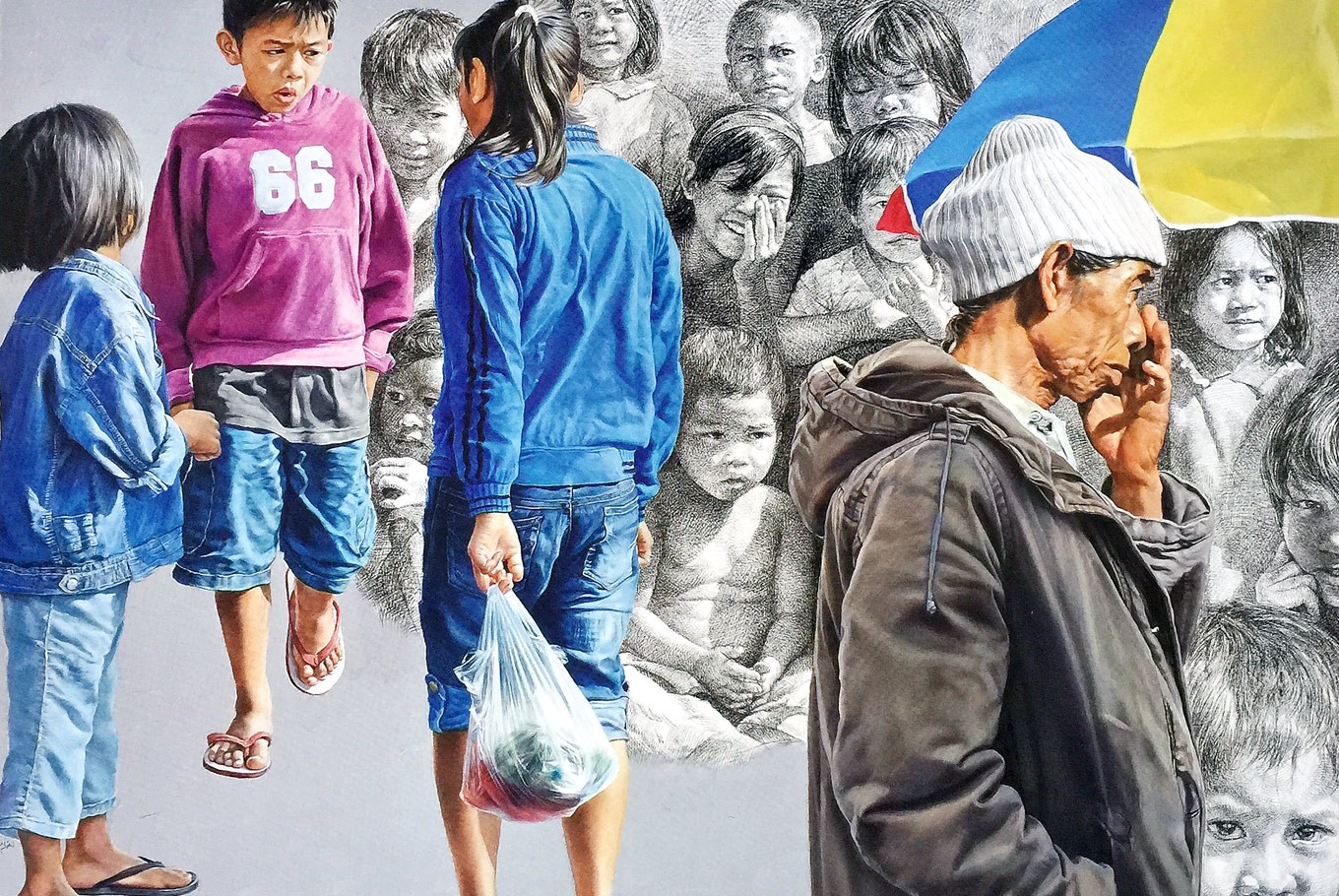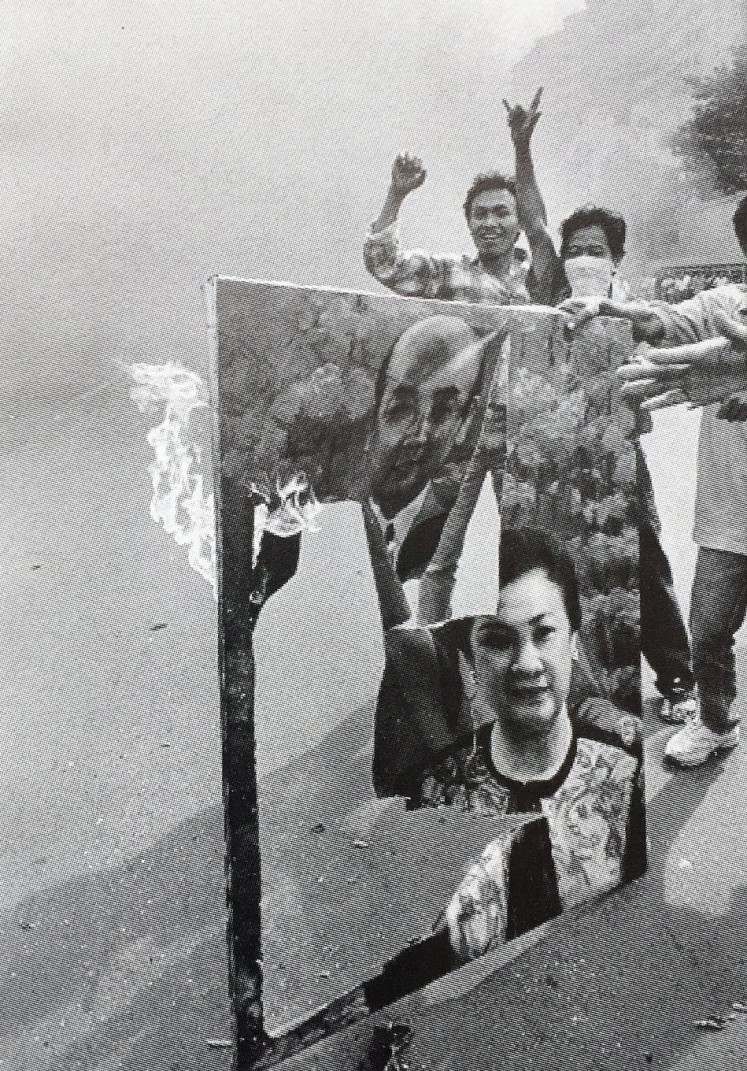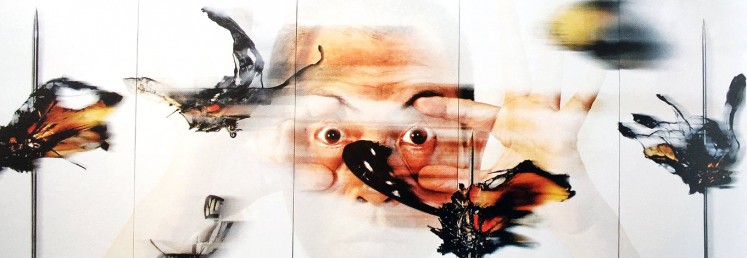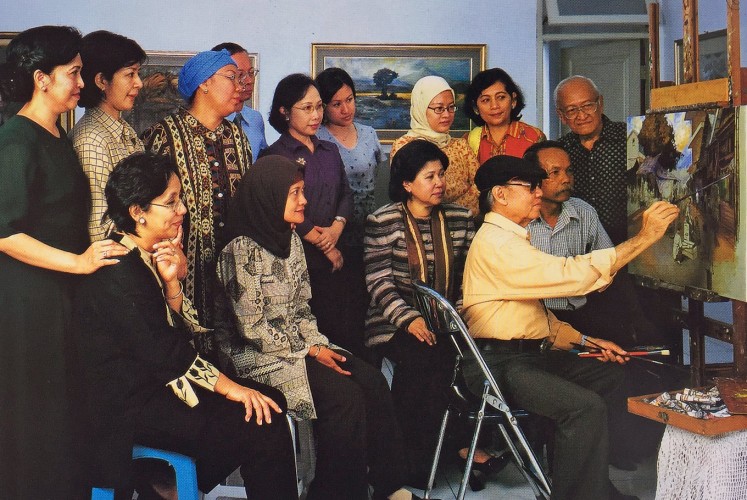Popular Reads
Top Results
Can't find what you're looking for?
View all search resultsPopular Reads
Top Results
Can't find what you're looking for?
View all search resultsPost-reform ethnic Chinese paintings
Indonesian artists of Chinese descent have been making a comeback since the start of the Reformation era, showing their existence through various painting styles.
Change text size
Gift Premium Articles
to Anyone
T
he fall of the New Order government in mid-May 1998 triggered reforms in all sectors, including culture, which was among others manifested in Presidential Decree No.6/2000 dated Jan. 17, 2000 and the revocation of Presidential Instruction No.14/1967, ending 32 years of discrimination against Chinese culture in Indonesia.
During the period of repression, ethnic Chinese artists were victimized, with several Chinese-tinged galleries and artworks in Jakarta and Surakarta, Central Java, being burned, damaged and looted in the May 1998 riots.
During this bloody riot, Chinese painter Li Shuji’s painting of Lim Sioe Liong aka Uncle Lim, a tycoon and most trusted business crony of then-president Soeharto, was destroyed by the mob.
At the end of this gloomy period, however, hundreds of ethnic Chinese visual artists were again active and began holding exhibitions everywhere. Gradually, they reaffirmed their vast visual art potential and the typical features of their styles.
Ethnic Chinese art in Indonesia generally has three characteristics. First, it remains classic and traditional Chinese in style and form, as shown in the works of Siauw Tjhang and Phang Guoxi. Second, it assimilates Chinese and Western or Indonesian styles, like the works of Lee Man Fong. Third, it shows no traces of Chinese origin, like the works of Benny Setiawan, Chusin Setiadikara, FX Harsono and Dadang Christanto.
Siauw and Phang are loyal to the style of classic Chinese paintings. These works are created with watercolors and paper as their medium, and by applying the technique of wet brush or dry brushes. The pointed brush it uses is called mopit. In classic Chinese paintings, inscriptions are written on one side of the canvas.
Late painter Lee successfully combined Chinese and Western painting elements. In many of his works, Indonesian nuances were also vaguely rendered. He brought life to sketches with a pencil, pen or brush, and made drawings as well as pastel, watercolor and oil paintings.
Lee, who created oil paintings on canvases and hardboards, showed off his combination of Chinese and Western elements in the hardboard works, where he offered the Chinese classic atmosphere of empty spaces in contrast to figures and objects painted in Western photographic form.
Such combinations are also often used to portray Indonesian themes, like rujak (fruit salad) sellers, becak (pedicab) drivers, Dayak dances and Balinese life.
Meanwhile, Benny and Chusin adopt the oriental tradition, despite their awareness of Chinese art norms and philosophy. FX and Dadang also bring the same character with paintings and multimedia artworks in modern and contemporary styles devoid of Chinese indications.
Look! by FX Harsono (JP/Agus Dermawan T)But behind their works are ironic and tragic stories of ethnic Chinese citizens in Indonesia, which can be understood because of the minority group’s experience as political victims. An example is FX’s digital work Look!, which represents an ethnic Chinese figure being forced to become a wide-eyed Malay.
The three characteristics of Chinese art evidently show that ethnic Chinese artists are capable of contributing to Indonesia through the various styles and methods they portray.
The fact that ethnic artworks, like those of the Chinese, can enrich a nation’s cultural treasure is also common in advanced countries recognizing pluralism.
France has for 50 years accommodated and exposed Chinese painters, from Zou Wuki to Wu Guanzhong, to put forth their influences. This is in line with the eagerness of many countries that are open to Chinese immigrants. Through such managed “exclusivity,” they are contributing their culture and undergoing assimilation.
Hands on: Tio Kim Hin (Cambodia) paints for his students. (JP/Agus Dermawan T)The contributions made by Chinese-Indonesians are condensed in the book Tionghoa dalam Keindonesiaan: Peran dan Kontribusi bagi Pembangunan Bangsa (The Ethnic Chinese in Indonesian Nationhood: Their Role in and Contribution to Nation-Building), published by Yayasan Nabil in 2016 in three volumes, as initiated by Eddie Lembong, the founder of Nabil.
The contributions of ethnic Chinese individuals to the Indonesian nation and state from the early 20th century are compiled in this book, covering a wide range of fields, from the economy to culture and education. In the sphere of art, it goes into detailed areas such as paintings, comics, film, theater, literature, wayang (shadow puppet) and visual art.
Historian Taufik Abdullah described the book as an elegant academic contribution to the proper understanding of the rhythm and direction of national history.
The appearance of a new character of art resulting from the acculturation of several art components with identities is a sign of progression in a nation’s art. After all, Chinese art isn’t limited to the barongsai (lion dance).














